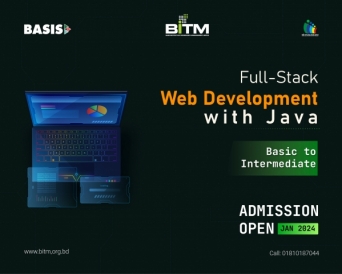- +8809612342486
- [email protected]

Skill Level: Basic to Intermediate
Setting Up Working Environment
HTML + CSS + Bootstrap + JavaScript + jQuery HTML
Project – Complete your first website using HTML CSS 3
Project – Add CSS to your HTML website JavaScript and jQuery
Project – Add Some jQuery to your website Bootstrap
SQL + MySQL Getting Started & Installation
Installation Creating Databases & Tables
Class Test: Solve Problem (Database, Table)
CRUD Basics
SQL Basics and SELECT
Update (UPDATE)
| Certified Training on Full-Stack Web Development for Beginners | Certified Training on Full-Stack Web Development for Beginners | 108 Hrs |